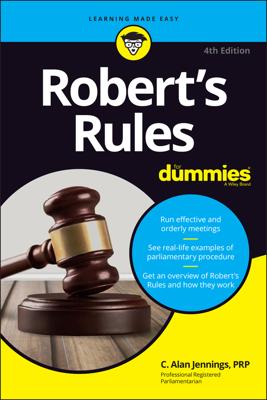

The motion to amend is perhaps the single most-used of the subsidiary motions allowed by Robert's Rules. You use this motion when you want to change the wording of the motion under consideration. You can use it to make a good idea better or a bad idea more palatable. Amendments are really at the heart of the process of perfecting motions before a final vote, and the importance of understanding the basics of amending can't be overstated.
If an amendment is adopted, the motion it's applied to changes. However, the amended motion itself is not adopted until the motion, as amended, is voted on and passes. If a motion to amend fails, the original motion is not changed in any way.
In making a motion to amend, be aware of its key characteristics; the motion
One big rule for using amendments is this: An amendment must be relevant (or, as Robert's Rules describes, "germane") to the motion it seeks to amend. Another important rule to remember is that an amendment that does nothing but make the motion a rejection of the original motion is not proper and not in order.
Amendments enable you to affect changes to pending questions in the following four ways:
For example, suppose an amendment is offered to insert words to a motion. It only complicates your life to try to amend the amendment into a motion to strike out words. If you're in a situation where that seems like the thing to do, encourage the group to defeat the first amendment (to insert words) and consider another amendment to accomplish the desired result.